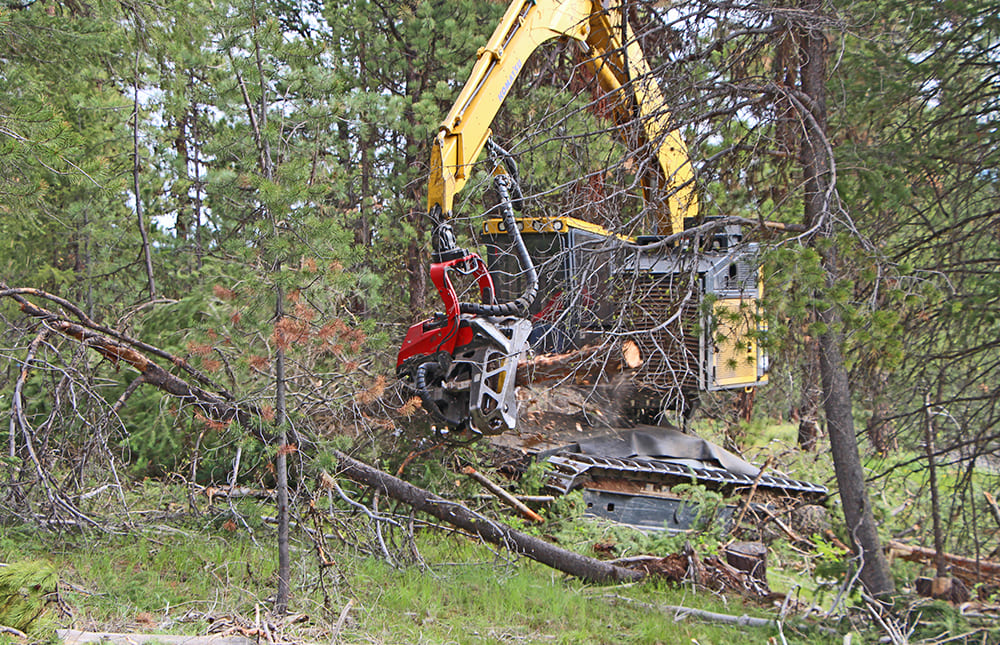Forest thinning, a proactive measure for forest management, is showing promising results in enhancing the resilience of mature trees and promoting native biodiversity in federal lands in eastern Oregon. This is according to research conducted by Oregon State University, which underscores the effectiveness of collective efforts in forest restoration.
Collaborative Research in Forest Restoration
The research, led by James Johnston from the College of Forestry at Oregon State University, is a product of long-term monitoring and partnerships between the university, the U.S. Forest Service, and local groups in Oregon’s Blue Mountains. Published in Forest Ecology and Management, the study highlights the success of this collaboration in securing federal funding and delivering scientific products that evaluate the efficacy of forest treatments.
Ecological Restoration of Forests
“Ecological restoration of seasonally dry, fire-prone forests has been a primary objective of Forest Service managers for over two decades,” Johnston stated. The study demonstrates that thinning contributes to the revival of tree and understory vegetation conditions that are linked with resilience in the face of disruption. Thinning not only aids in mitigating fire risk but also reinstates various ecological functions that enhance forest resilience over time.
Case Study: Malheur National Forest
The research team, including Johnston and researchers from the Forest Service, Blue Mountains Forest Partners, and the Nature Conservancy, focused on a 2,900-hectare area in the Malheur National Forest. The southern Blue Mountains’ ponderosa pine forests are a “priority landscape” that benefits from federal funding under the Forest Service’s Collaborative Forest Landscape Restoration Program.

In 2014 and 2015, the study area underwent thinning to bolster resilience to fire and facilitate the recurrence of episodic low-severity fire. Fire dynamics in the region, and across seasonally dry forests of the interior Pacific Northwest, underwent significant changes beginning in the last decades of the 19th century.
Historical Context of Forest Management
Johnston explained that the late 1800s and early 1900s were unusually cool and moist. European settlement altered how Indigenous people used fire on the landscape. Early settlers discouraged the use of fire on the land, and early forest rangers actively extinguished fires in the interest of sustained yield timber harvest. Additionally, there was widespread unregulated grazing that eliminated the fuel that supported low-severity surface fire.
By the late 20th century, dense stands and shaded understories led to high-severity wildfire, severe drought-related mortality, and susceptibility to bark beetles. In essence, the forests were not as resilient as they had been when they comprised open stands of widely spaced, shade-intolerant, fire-resistant trees.
Thinning for Resilience
In their study, Johnston and his team assessed the extent to which thinning can restore resilience by examining overstory tree attributes such as radial growth, resin production, abundance of non-structural carbohydrates, and leaf area; all of these are associated with resilience.
“We also studied the responses of understory vegetation—the grasses, forbs, and shrubs that influence fire behavior and forest resilience,” Johnston added. “We observed an increase in species richness and diversity within thinned stands three to four years after thinning, which stimulated the growth of vegetation that supports low-intensity fire regimes and is suppressed under a closed-canopy forest.”
Impact of Thinning on Tree Growth
The researchers found that tree radial growth was greater in thinned stands beginning three years after thinning. The abundance of glucose and fructose was lower in treated stands, suggesting trees were utilizing carbon reserves for leaf and wood production.
“And while our study area was not treated with prescribed fire, we see the reintroduction of fire as an important management tool that can restore historical fire regimes and achieve additional management goals,” Johnston concluded.
